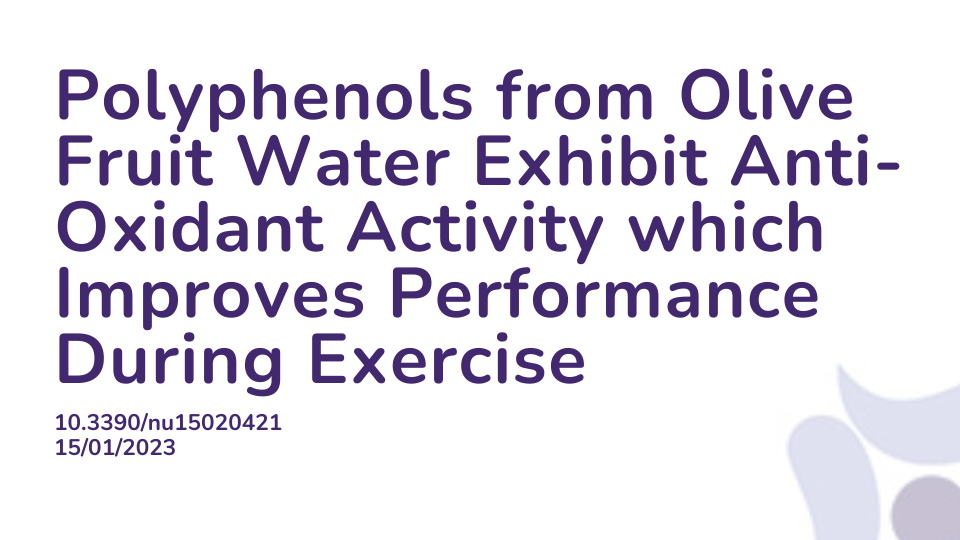Summary:
Dietary strategies to enhance performance and reduce muscle soreness post exercise has gained attention as naturally occurring phytochemicals and anti-oxidants have shown to have some benefit. Polyphenols from sources such as cacao, pomegranates and cherries have previously been studied for post exercise soreness. Many fruits, vegetables and beverages such as tea and coffee contain polyphenols and antioxidant properties. This research looked at other sources of dietary polyphenols and found that olive fruit water, which is often discarded during the production of olive oil, may have benefits for performance and post exercise soreness. The findings revealed that olive fruit water had positive effects on several key markers for running, during and post exercise, as well as anti-oxidant activity. This is an exciting area of research as there may be opportunity to utilise a new part of a plant that is typically wasted and maximise its health benefits.
Abstract:
There is current scientific interest in naturally sourced phenolic compounds and their potential benefits to health, as well as the effective role polyphenols may provide in an exercise setting. This study investigated the chronic effects of supplementation with a biodynamic and organic olive fruit water phytocomplex (OliPhenolia® [OliP]), rich in hydroxytyrosol (HT), on submaximal and exhaustive exercise performance and respiratory markers of recovery. Twenty-nine recreationally active participants (42 ± 2 yrs; 71.1 ± 2.1 kg; 1.76 ± 0.02 m) consumed 2 × 28 mL∙d−1 of OliP or a taste- and appearance-matched placebo (PL) over 16 consecutive days. Participants completed a demanding, aerobic exercise protocol at ~75% maximal oxygen uptake O2max) for 65 min 24 h before sub- and maximal performance exercise tests prior to and following the 16-day consumption period. OliP reduced the time constant (τ) (p = 0.005) at the onset of exercise, running economy (p = 0.015) at lactate threshold 1 (LT1), as well as the rating of perceived exertion (p = 0.003) at lactate turnpoint (LT2). Additionally, OliP led to modest improvements in acute recovery based upon a shorter time to achieve 50% of the end of exercise O2 value (p = 0.02). Whilst OliP increased time to exhaustion (+4.1 ± 1.8%), this was not significantly different to PL (p > 0.05). Phenolic compounds present in OliP, including HT and related metabolites, may provide benefits for aerobic exercise and acute recovery in recreationally active individuals. Further research is needed to determine whether dose-response or adjunct use of OliP alongside longer-term training programs can further modulate exercise-associated adaptations in recreationally active individuals, or indeed support athletic performance.
Article Publication Date: 15/01/2023
DOI: 10.3390/nu15020421



